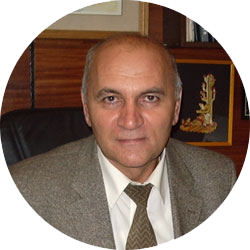RF Patent # 2078737. Filed 26.05.1994, published 10.05.97.
Bakhir V.M. and Zadorozhny Yu.G.
Flow-through electrochemical modular reactor – FEM-3 module. FEM-3 module, while very similar to FEM-2 module in the principle of its application in electrochemical systems, technically has an absolutely new design, and essentially differs from its prototype – FEM-2 module. Unlike FEM-2 and FEM-1 modules, FEM-3 module is devoid of problems arising in connection with the presence of bi-polar areas on the surface of external electrode, and it surpasses FEM-1 and FEM-2 modules in its mechanic, hydraulic and electrochemical reliability and durability. The Table below presents principal differences between FEM-1, FEM-2 and FEM-3 modules, which demonstrate advantages of FEM-3 module as a commercial standard all-purpose device for various types of electrochemical systems.
FEM-3 module and RPE reactors made up of units of FEM-3 modules have the following typical feature. FEM-3 modules can be used to implement any technological processes developed for FEM-1 and FEM-2 modules. Simultaneously, performance characteristics of these processes become better. However, FEM-1 and FEM-2 modules cannot be used in process flow sheets developed for FEM-3 modules either due to reasons making such replacement technically and technologically impossible, or because performance characteristics of processes implemented with the help of FEM-1 or FEM-2 modules prove to be worse than when using FEM-3 modules.
Principal technical and technological differences of FEM-1, FEM-2 and FEM-3 modules
| Technical and technological characteristics | FEM-1 | FEM-2 | FEM-3 |
| FEM module weight, g | 220 | 200 | 130 |
| Number of seal rings, pcs. | 10 | 10 | 4 |
| Number of anode bushings, pcs. | 2 | 2 | 2 |
| Number of cathode bushings, pcs. | 0 | 0 | 2 |
| Number of collectors, pcs. | 2 | 2 | 0 |
| Complexity of FEM module assembly | High | Medium | Low |
| Complexity of RPE-L -type reactor assembly | Medium | Medium | Low |
| Compactness of RPE-L reactor | Satisfactory. | Satisfactory | Good |
| Complexity of RPE-M-type reactor assembly | High | Satisfactory | Low |
| Compactness of RPE-M reactor | Unsatisfactory | Unsatisfactory | Good |
| Complexity of RPE-F –type reactor assembly | High | High | Low |
| Compactness of RPE-F reactor | Unsatisfactory | Unsatisfactory | Good |
| Possibility of RPE-S–type reactor assembly | No | No | Yes |
| Possibility of changing configuration of inlet and outlet connections by pivot turn of heads and (or) bushings | No | No | Yes |
| Probability of damaging diaphragm during disassembly | High | High | Yes |
| Possibility of replacing inner electrode without diaphragm removal | No | No | Yes |
| Risk of electrochemical anode erosion in the area of liquid feeding (discharge) to the electrode chamber of external electrode | High | Medium | No |
| Risk of induced polarization of the outer surface of external electrode | High | Medium | No |
| Probability of decreased concentration of heterogeneous structures carriers of active charged particles in areas of changed configuration of electric lines of force (in the outlet openings of external electrode) | High | Medium | no |
| Accuracy of co-axial diaphragm installation in the interelectrode space | Low | Low | High |
| Guaranteed seal-tightness of electrode chambers separation by diaphragm during assembly | No | No | yes |
| Possibility of spontaneous diaphragm shift resulting from seal ring deformation due to electrochemical process factors | Yes | Yes | No |
| Probability of deformation, embrittlement, and decrease of electrocatalytic cathode activity as a result of hydrogen pickup | High | High | No |
| Existence of critical zones of liquid convective flow blockage in external electrode chamber (three phases “gas bubbles-charged metal-liquid” in narrow clearances at the inlet and outlet) | Yes | Yes | No |
| Heat-exchange with the environment | Good | Good | Excellent |
In the process of further practical work with FEM-3 modules it was realized that the development of a reliable, all-purpose and easy-to-use electrochemical reactor marked the birth of the technology of electrochemical activation in particular, and the technology of “personal” applied electrochemistry in general.
